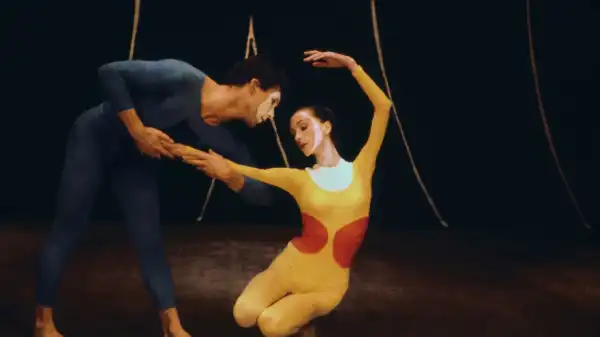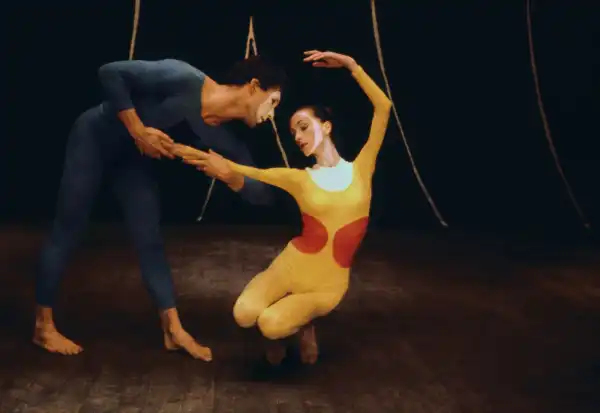
Save this storySave this storySave this storySave this storyYou're reading the Goings On newsletter, a guide to what we're watching, listening to and doing this week. Sign up to get it sent to your inbox.
When a dance isn’t performed for long , it begins to fade. Memories of it fade, and videos can be unclear—especially choreographers’ recordings. So reviving old dances is no easy task. But the process of restoration is fascinating in its own right. That’s what the Paul Taylor Dance Company has been doing for the past few months, reviving two of Taylor’s 1960s works, Tablet (1960) and Churchyard (1969), for a weeklong show at the Joyce (June 17–22). “For every minute of dance, we spent two hours researching,” Michael Novak, the company’s new artistic director following Taylor’s death in 2018, recently noted. “But we got it done.”

Pina Bausch and Dan Wagoner in Paul Taylor's The Pill, 1960. Photograph by Helga Gilbert; Courtesy of the Ellsworth Kelly Foundation
It also opens up new possibilities for the company. Contemporary dancers work alongside performers from previous eras; they can perform Taylor’s work that, while old, still sounds fresh, and audiences can see pieces they haven’t seen in a long time. It’s a blank slate. Plus, these particular dances are full of surprising elements. “Tablet” is a duet with a commedia dell’arte feel. The dancers wear makeup and color-blocked jumpsuits designed by Ellsworth Kelly. They twist and contort, creating geometry with their bodies. Sometimes, when they touch impassively, they resemble a Cubist Adam and Eve.
“Churchyard,” a more complex work, explores false piety and the violence that underlies it. It’s set in the Middle Ages—Taylor was a fan of plays from that era. It also features a beautiful pas de deux. A man and woman touch each other tenderly, creating an image of innocent love; then, suddenly, she kicks him. This juxtaposition of the men’s contrasting natures is an important theme in Taylor’s work. “Churchyard” will be presented at the Joyce along with his better-known 1976 work “Cloven Kingdom,” in which seemingly polite men and women in formal attire lapse into strange, threatening behavior. It will be followed by “Esplanade,” set to Bach. Turning fifty this year, it’s perhaps Taylor’s most joyful and welcoming dance, and certainly one of his favorites. What’s new? What’s old? “I’m obsessed with the idea of what’s timeless and relevant,” says Novak. “When I go back to Paul Taylor's repertoire, I am struck by how avant-garde some of his works are.” – Marina Harss
Sourse: newyorker.com






